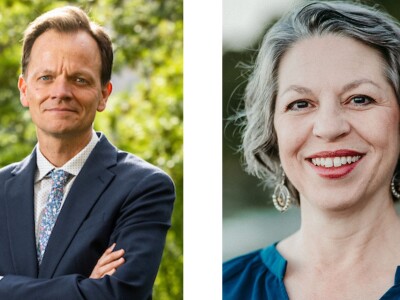
By recording nearly 5,000 life stories during the past few years, BYU’s Cambodian Oral History Project has brought to light many narratives long suppressed by the trauma of the late 1970s Khmer Rouge regime, during which nearly two million Cambodians were killed or died.
When BYU alum and speech recognition expert Jeff Adams—who was the lead designer of Amazon’s Alexa before starting Cobalt Speech and Language—saw BYU’s story about the project this past summer
During the conversation, Adams learned that 2,000 of the recordings had already been laboriously transcribed by hand, with 3,000 to go, and “a light bulb went off.”
Adams knew that a large database of quality recordings and accurate transcriptions are the two essential ingredients to train a computer to understand a new language: BYU’s collection provided the perfect foundation to create the first-ever automatic speech recognition tool specifically designed to transcribe Khmer, the language of Cambodia.
“It was one of these things where you wonder how much divine intervention was involved,” said Adams. He suggested a collaboration between Cobalt and BYU students to create the new software, which will make the transcription process almost instantaneous and lay the groundwork for more efficient English translations that scholars of Cambodian history and culture can study.
“Increased access to these stories will be a gift for the Cambodian people who treasure having written copies for their family records,” said BYU linguistics student Allison Lasswell, who is developing the software along with information systems student Jeremy Hills and with mentorship from Cobalt. “For the first time, many in the rising Cambodian generation are hearing about what grandma’s wedding day was like or how their uncle died.”
Lasswell and Hills both gained fluency in Khmer through missionary service and became involved with the Cambodian Oral History Project to maintain a connection to the culture.
Hills is creating and debugging a model to teach the computer to interpret Khmer sounds. Features of Khmer present unique challenges for automatic speech recognition, including the absence of spaces between words. This space is a feature Western languages have but most Asian languages do not, one reason generic programs like Google Voice have been less useful for Khmer.
To that end, Lasswell is using her background in Khmer and her knowledge from linguistics coursework to perform analysis that will help the new software “hear” Khmer correctly, including by distinguishing between multiple speakers through speech patterns and accurately identifying Khmer phonemes and words in a recording.
“One thing I really love about this,” said BYU Chinese professor Dana Bourgerie, who started the Cambodian Oral History Project, “is that undergraduates are doing exactly what they’re training to do, amazing things that even graduate students usually don’t do.”
Cobalt mentor Ryan Lish agreed, noting that he has been “impressed by the students’ willingness to have a firehose of information unleashed on them.”
While the educational benefits to the students are substantial, what matters most to all of those involved in the project is the history they are helping to preserve.
“Sometimes it’s tempting to think, ‘Who’s going to go back and look at 5,000 interviews?’” said Hills. “But we’re playing the long game. Someday somebody’s going to want these interviews of their parents or grandparents, and we’ll have them.”



